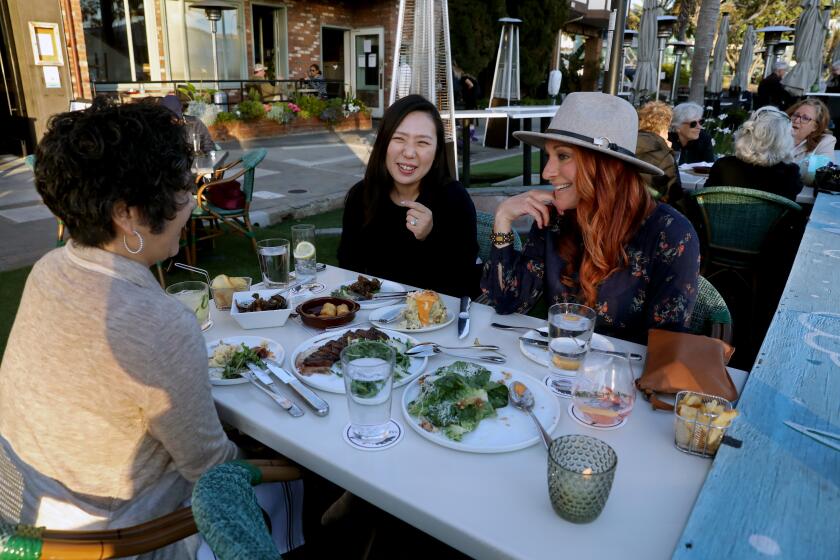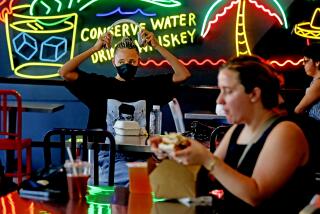Scientists scramble to see why, in rare cases, even the vaccinated can get COVID-19
Carey Alexander Washington, 80, a practicing clinical psychologist, called his daughter in January as soon as he received his first dose of the Pfizer COVID-19 vaccine.
“He was just so excited that he had gotten it,” said Tanya Washington, 49, a resident of Atlanta who works at an investment firm.
Carey received his second shot Feb. 4. A little more than a month later, the South Carolina resident experienced shortness of breath. His internist did not test him for the virus. Carey, after all, was fully vaccinated. The doctor sent him to a cardiologist instead, who also didn’t test for the coronavirus.
On March 25, Carey died after nearly two weeks in the hospital, his final days in intensive care. COVID-19 had destroyed his lungs.
Carey was among a tiny proportion of people who had been vaccinated against COVID-19 and then contracted the virus. The Centers for Disease Control and Prevention have reported that about .008% of the fully vaccinated have become infected and about 1% of them have died. Public health officials said such cases were expected and their number reassuringly few.
“No suit of armor is 100% effective,” said Dr. John Swartzberg, an infectious disease expert at UC Berkeley.
But the so-called breakthrough infections remain troubling, and the reported numbers are likely lower than the actual cases. They serve as cautionary tales to fully vaccinated people to get tested if they develop symptoms for the infection and to continue to follow health guidelines.
In Carey Washington’s case, his daughter wondered if he might have survived if he had been tested early on for the coronavirus, after his symptoms appeared. Did his vaccination status deter his doctors from testing him?
As the pandemic continues, researchers want to know more about such cases, including the role different strains of the virus may play and whether infected people share traits or behavior that made them more vulnerable. The information could lead to modifications of the vaccine or how it is administered to certain people.
Doctors and other health experts weigh in on what they feel comfortable doing as coronavirus cases in California continue to plummet.
Stacia Wyman, a scientist at UC Berkeley who is sequencing the genome of the virus in breakthrough cases, said there should be a centralized place for gathering breakthrough genome sequences so patterns can be detected and information shared.
The virus will continue to evolve, and sequencing detects whether the virus is one of the already identified variants or whether a new one has emerged.
“This is information we need to combat the pandemic,” said Wyman, a computational biologist with UC Berkeley’s Innovative Genomics Institute. “It is really quite frustrating that there is not a lot of organization around this. I don’t think we have a year to wait to get our act together with the breakthrough cases.”
As of April 20, the CDC reported 7,157 infections among 87 million Americans who had been fully vaccinated. Nearly half of the cases involved people 60 and older, and about a third of the infected had no symptoms. Nearly 500 were hospitalized, two-thirds because of COVID-19. Eighty-eight people died, 13% of them of causes other than COVID-19.
The CDC cautioned that the cases were likely underreported.
In California, the state Department of Public Health has identified 1,379 cases of infection among 10.7 million residents who have been fully vaccinated, which occurs 14 days after the second dose of Pfizer or Moderna or a single dose of Johnson & Johnson. The department said it did not have any information yet on the number of vaccinated Californians who were hospitalized or died from the disease.
To better understand breakthrough infections, researchers said that it is important to know if the vaccines were properly stored, the underlying conditions and behavior of the “hosts” who got infected and the nature of the virus that infected them.
Were the people taking certain medications that blunted the effectiveness of the vaccines? Were they vaccinated at a time when they had little sleep or had been drinking excessively? Swartzberg asked. Could those factors interfere with the vaccine? “It is pure speculation,” he said.
He said the amount of exposure to the virus also may play a factor, overcoming the immunity one gets from the vaccine.
“The dose makes the poison,” he said. “In many cases with infectious diseases, the more virus you get exposed to in one setting, the more likely you are to be infected.”
Dr. George Rutherford, an infectious disease expert at UC San Francisco, said it was not surprising that some people who were fully vaccinated have died of COVID-19. It has been well known that the vaccines don’t offer 100% protection, he said, and frail and elderly people are particularly susceptible.
“Remember we vaccinated the oldest of the oldest at nursing homes first so if there were going to be breakthrough cases there, there was going to be mortality,” Rutherford said.
A CDC study published last week found the Pfizer and Moderna vaccines were 94% effective in preventing adults 65 and older from getting sick enough to require hospitalization. The study looked at patients in 24 hospitals in 14 states from January through March 2021. “Vaccination is a critical tool for reducing severe COVID-19 in groups at high risk,” the study said.
Two other CDC studies of breakthrough cases at nursing homes showed the vaccines protected residents, even when the virus spread through the homes.
At a skilled nursing home in Kentucky, 18 residents and four staff members who had been fully vaccinated became infected during an outbreak caused by an unvaccinated employee. The culprit was a variant that had never been detected in Kentucky, an uncommon strain that is not on the CDC’s list of variants of concerns.
Vaccinated residents and staff were 87% less likely to have COVID-19 symptoms than the unvaccinated, the study found. Three residents died, two of whom were unvaccinated.
In the second study of skilled nursing homes, in Chicago, 22 possible breakthrough infections occurred among fully vaccinated persons. Two-thirds of the infected were asymptomatic. The others had mild to moderate symptoms and one person died.
Dr. Art Reingold, a UC Berkeley professor of public health, noted that the Biden administration has provided $1 billion to expand genome sequencing of the virus, which should make it easier to detect new variants and their role in infections.
California officials say they do not plan to require vaccine verification, but new rules incentivize private venues to seek proof of tests or inoculation.
“The concern is that some of the variants could eventually develop in a way that the vaccines no longer protect you,” he said. If that happened, booster shots or reformulated vaccines would be needed, he said.
So far, he said, the tiny fraction of breakthrough infections means “people shouldn’t panic.” In fact, he said, the numbers in California look so good that people may be able to shed their masks indoors by summer.
A person is more likely to be hit by lightning than have a breakthrough infection, Swartzberg said. Dr. Carlos del Rio, an expert in infectious disease and vaccines at the Emory University School of Medicine, said someone was more likely to be hit by a car in a busy intersection than develop a breakthrough COVID-19 infection.
“It is really important for the public to put this in perspective,” said Swartzberg. “The chances of you having a breakthrough of any kind are minuscule. And the chances of that breakthrough making you even modestly ill are even more minuscule.”
But Tanya Washington wants people to remember that breakthroughs are possible. She believes her father was infected by an unvaccinated employee in the suite of offices he shared with other doctors. Her dad contracted the California variant of the virus, as did at least one other person in the office.
“He went to all these doctor appointments, and nobody ever picked up on COVID,” she said. “He was double vaccinated. He was in what he thought was the safe environment of his office.”
More to Read
Sign up for Essential California
The most important California stories and recommendations in your inbox every morning.
You may occasionally receive promotional content from the Los Angeles Times.












